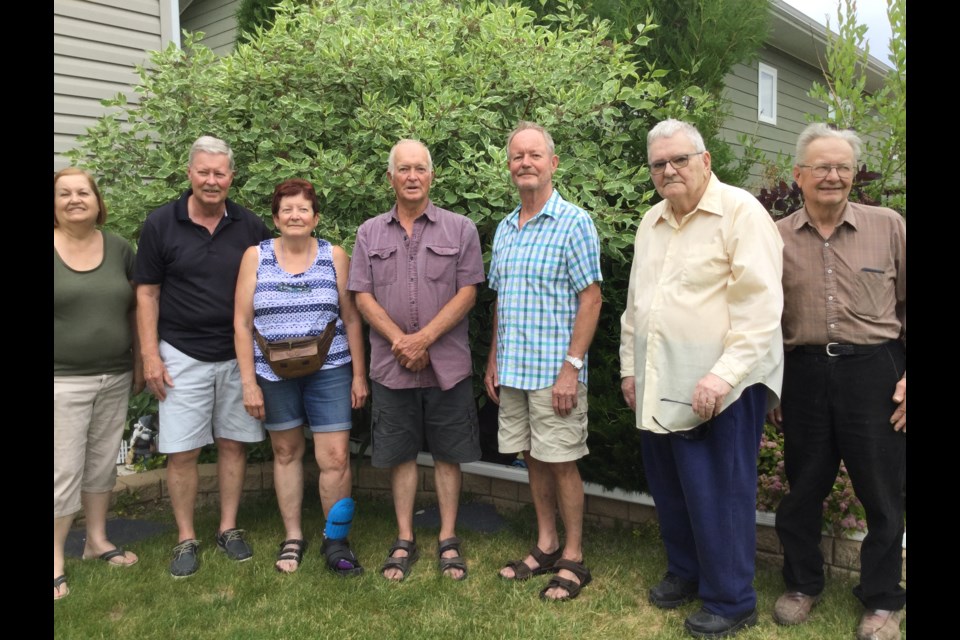Henry was a Gunner in the 41st Battery, 10th Brigade, Canadian Field Artillery in the First World War. He was killed in action overseas, Aug. 29, 1918, just two and a half months before the was declared over on Nov. 11, 1918.
Henry Hollingsworth 1885-1918 is buried in Faubourg-D’Amien Cemetery, Arras, France.
Although Henry died 103 years ago, along with fellow soldiers, he is remembered dearly by a close group of people living in Canada and in the town of Virden.
Henry’s story and that of his relatives in and around Virden and across Canada, began in Belfast, Ireland where Samuel A. (1856) and Martha S. (1855) Hollingsworth had a large family of 11 children. Due to Ireland’s hardships, seven children - two daughters and five boys - reached adulthood.
The first daughter, Anna (1879) married at 19 and went off to do missionary work in South Africa.
The next child, Henry Alexander Hollingsworth, 21, emigrated to Canada or the United States in 1906. He landed in San Francisco, found work on the Golden Gate Bridge which had been damaged in the earthquake (the California earthquake of April 18, 1906).
Henry earned enough money to relocate to Toronto, Ont. He worked at T. Eaton Co., earning enough to bring more family to Canada.
First to arrive was his father Samuel A. (1856-1929) and brothers Ellery R. (1893-1971) and Samuel S. (1886-1967). Later, Henry’s mother Martha (1855), his sister Fanny S (1890-1973) and his last two brothers Elmer (1895-1973) and William M. (1896) arrived in Toronto.
Henry’s mother Martha was not happy living in Canada and soon returned to Ireland.
By 1910, Henry Hollingsworth married Elizabeth Lemon, who had come from Belfast, Ireland. They had a family of four: Lillian M. (1911-1985), Sammie H. (1912-1928), Harry H. (1914-1963) and Roy H. (1915-1989).
Henry’s sister Fanny, now 22, tired of all the work looking after her father, brothers and their friends and in 1912 decided to go west and look for other work. She found work in Miniota, got married and moved to a farm in the Victor District, north of Virden, in 1914.
That was also the start of the First World War. One by one, the Hollingsworth brothers enlisted for duty.
Henry enlisted in 1915, brothers Elmer and William followed later and by 1916, the three brothers were sent overseas to France.
William and Elmer returned to Canada after the war, with Elmer also serving in the Second World War as a guard stationed at Red Lake, Ont. and then at Calgary.
Henry was not so lucky. He was killed in action in 1918, leaving behind his wife Elizabeth and their four small children.
By 1924, Elizabeth, struggling to raise her children in the city of Toronto, decided to send them west to her sister-in-law Fanny.
At 13, Lillian Hollingsworth with her three small brothers boarded a train and travelled west to Two Creeks Station north of Virden, where they were met by their aunt, Fanny.
Fanny raised the children with her own until Lillian went off to Saskatchewan to finish school.
Lillian returned to Victor District and worked for several families. She married and raised seven children which are the grandchildren of Henry Alexander Hollingsworth: Glen Draper, formerly of Miniota now living in Brandon; Henry (Harry) Draper of Virden; Dwayne Draper of Ottawa; Roy Draper of Virden; Fay Tapp of Virden; Murray Draper of Coquitlam, B.C. and Joan Thompson, of Keremeos, B.C.
Henry left a legacy:
“To you from failing hands we throw
The torch; be yours to hold it high.”- from In Flanders Field by John McCrae




